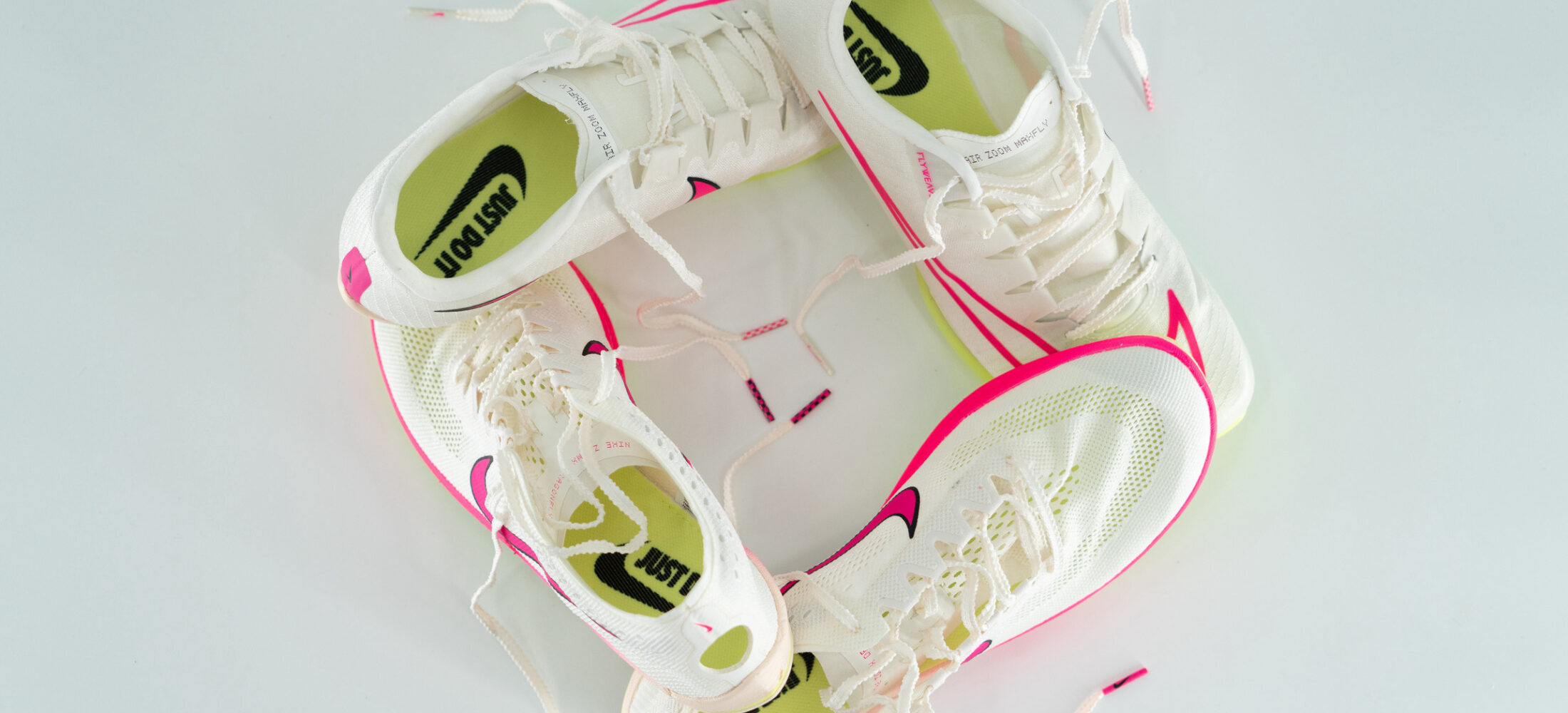
Best Track Spikes
What are track spikes? Which track spikes are best? What distances should I race in them? Here’s an article to help make track spikes easier.
Track and field is one of the least expensive sports that one can compete in. The track is typically provided, the field is a bonus, and the running is your choice. If you want to strip the sport to its bare bones, then yes, running is a sport that truly just requires effort and the desire to compete.
That is, until you want to race track and field. To run track and field all you need is shoes and a body to step up to that start line and compete against the other athletes. To race track and compete in field? Well, that’s when the equipment comes in. There’s a lot of nuance, so let’s just dive right into the weeds.
The Anatomy of a Track Spike
Like any track spike, they require metal spikes or some form of stud screwed into the bottom of them and a foot to make them work. What you screw the spike into is known as the spike plate. The spike plate is the hard, less flexible part of the shoe that not only holds the spikes, but helps the shoe be more responsive to the force being put into the Earth by your foot. The look of the spike will resemble a regular running shoe otherwise.
Some disciplines in track and field have different designs for their spikes based around the needs of their athletes. However, all of these designs are referred to as “spikes”, which can make it confusing to distinguish between them. That’s where this article will provide some guidance.
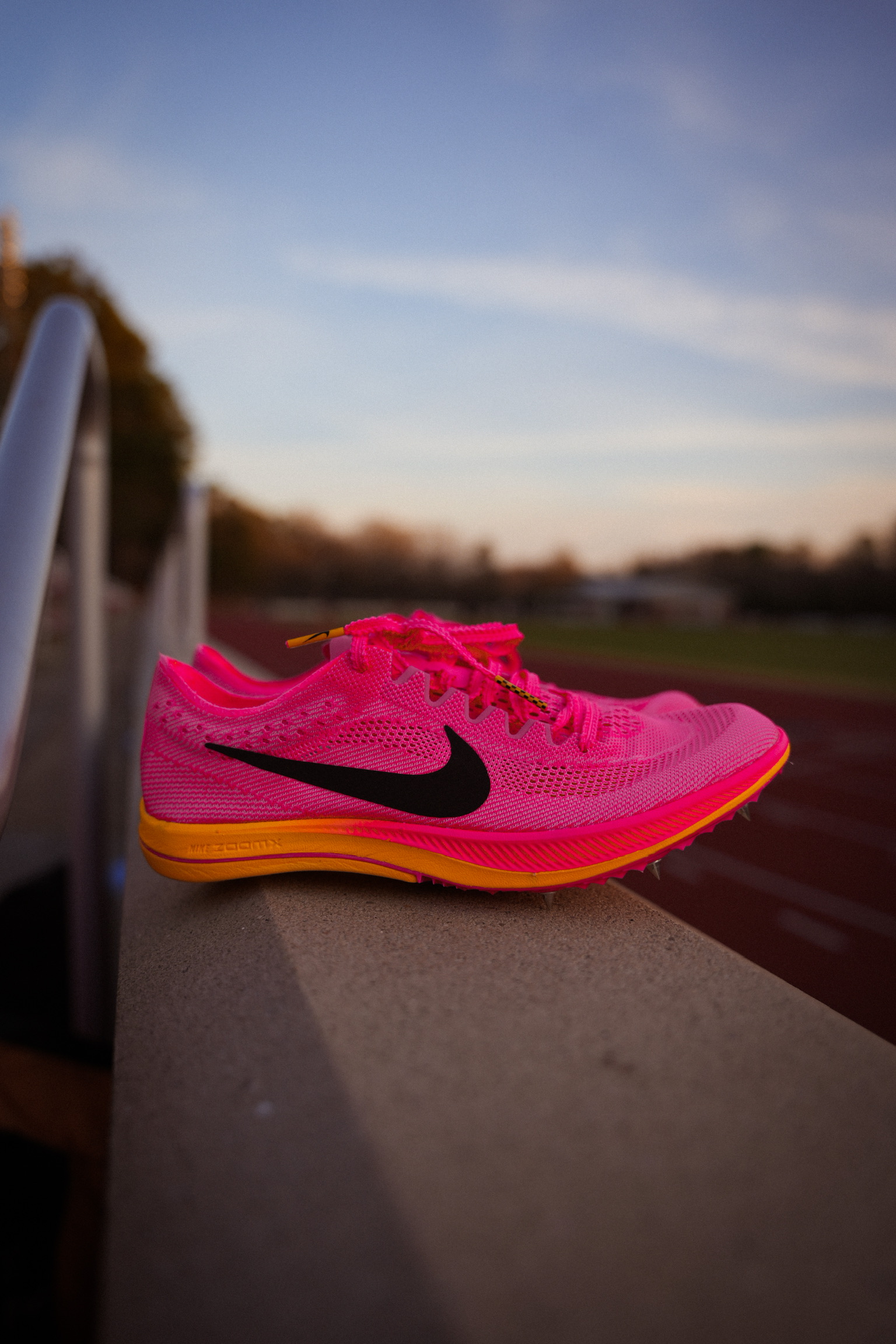
Distance Running
Am I starting with this section because I know it the best? Maybe, but that doesn’t take away from the complexity of spikes for distance runners.
Now, if you’re like me, you google “track spike”, buy the first pair that pops up on google, and you race your first ever high school track meet in them. Too bad they were sprinter spikes, my feet ached for days after. Having the wrong gear made me contemplate never running another track meet again. If you’re wiser than I am ( if you’re reading this, you are) you are doing the due diligence to find the right spike for yourself or your child as they get ready for their first track meet. Anyways, into the technical stuff.
Distance running spikes are most suited for races from 1500m to 10k. The spikes typically are more flexible, more comfortable, and lighter than most of the other spikes in this article. Distance spikes are more flexible because that allows the distance runner’s foot to run more naturally as they would in any other shoe to cover the longer distances of the race. By that I mean run as if they were barefoot or in any other running shoe.
Distance spikes are made by pretty much every major brand, and they all have bits and bobs that make them the crème de la crème. But much like the daily trainers that you studied and examined over the course of many runs and trips to your local running store (Runologie), some are better than others. It’s just a fact. So, here are my picks for top class distance spikes.
Nike Dragonfly/Dragonfly XC
If you’ve watched any professional or collegiate track or cross country race over the past 3 to 4 years, you will have seen all of these runners wearing some outrageously loud neon spikes. Those are the Nike Dragonfly.
With Nike’s first in class ZoomX foam and patented carbon fiber plate, the Dragonfly has set the tone for the future of distance spikes. The energy return from the spike allows the distance runner to extract their best times possible out of the track as the carbon fiber plate acts as a catapult. The ZoomX foam is a critical component, providing incredible cushion and support, which becomes more important the longer the runner is in the spike.
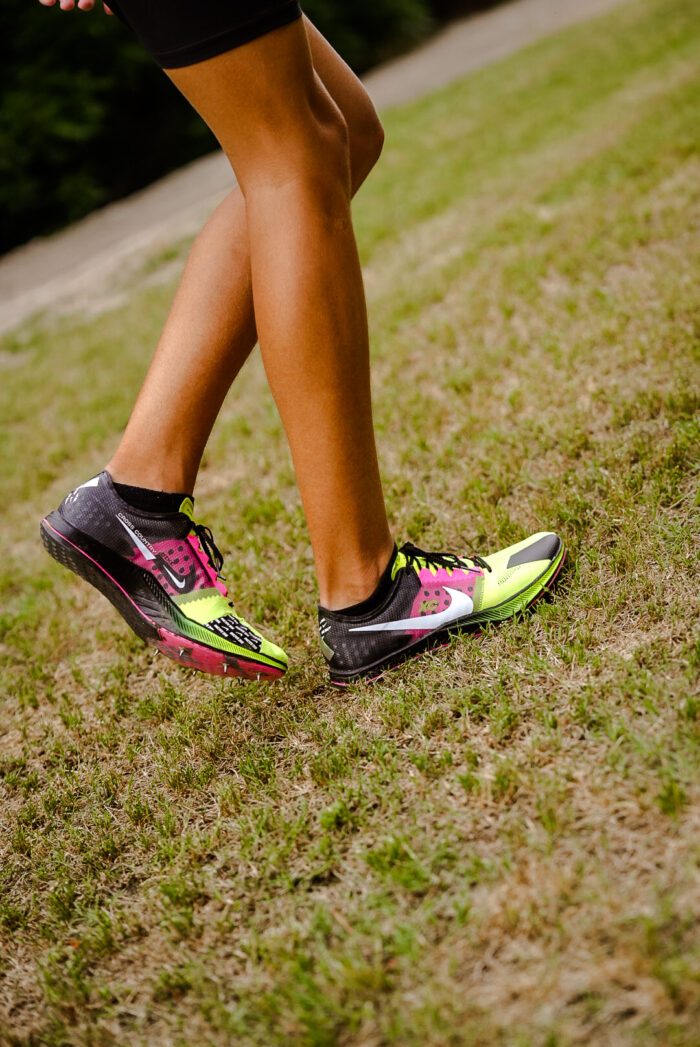
The Dragonfly is best for any distance from 1500m to 10k. It even comes in a cross country version, known as the Dragonfly XC, which has a more durable upper and a rubber outsole to cover the spike plate.
Nike Air Zoom Victory
If you’re looking for a spike specifically for the middle-distance races (800-3000), snag a pair of Air Zoom Victory’s. It’s a shoe with some ZoomX foam under the heel to provide a cushion and an airbag underneath the forefoot. It’s an aggressive distance spike with elements of a sprint spike intertwined (less cushion than a Dragonfly).
Many of the world’s best middle distance stars race in the Air Zoom Victory because of the responsive speed that the airbag provides. Jakob Ingebrigtsen has raced in the spikes repeatedly in the Diamond League circuit when approaching the 1500m. I think the spike has range down to the 400m if a sprint spike feels uncomfortable for the duration of a quarter mile.
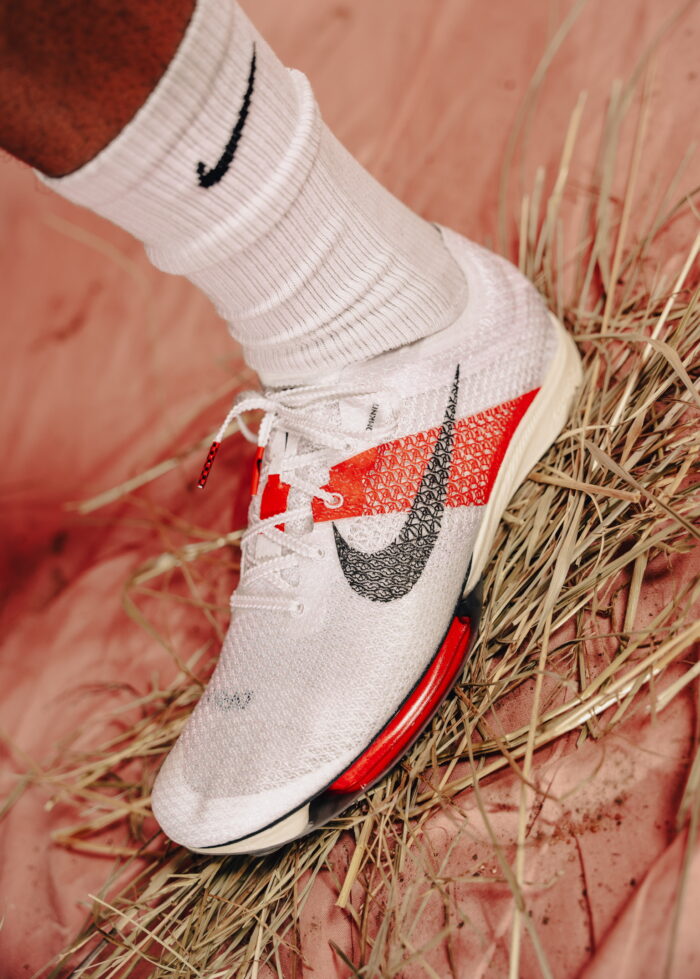
The Nike Air Zoom Victory would be a track spike for those that know their specialty is the middle distances. It doesn’t have a ton of range beyond those event.
Adidas Adizero Avanti TYO
To mention Nike and not bring up the other major player in the spike game would be questioning my integrity as a runner. Adidas’ Avanti TYO is up there as one of the best modern spikes to grace the track. With a Lightstrike Pro underfoot foam, the Avanti is begging you to push the pace up front. Adidas uses their signature Lightning Rod technology which acts as a carbon plate with a bit more flexibility to ride with the natural movement of your foot. The Avanti is best suited for anything from 1500m to 10k and cross country. That being said, there’s nothing natural about the Avanti’s pace.
Adidas has been putting together incredible times in the distance world with runner’s in these spikes. I mean, just look at the past few NCAA Cross Country National Championships. The two best teams of the past 4-5 years on both the men’s and women’s sides have been Adidas schools. Many of their athletes are putting together elite performances in the Avanti TYO. The three stripes of Adidas are no slouch.
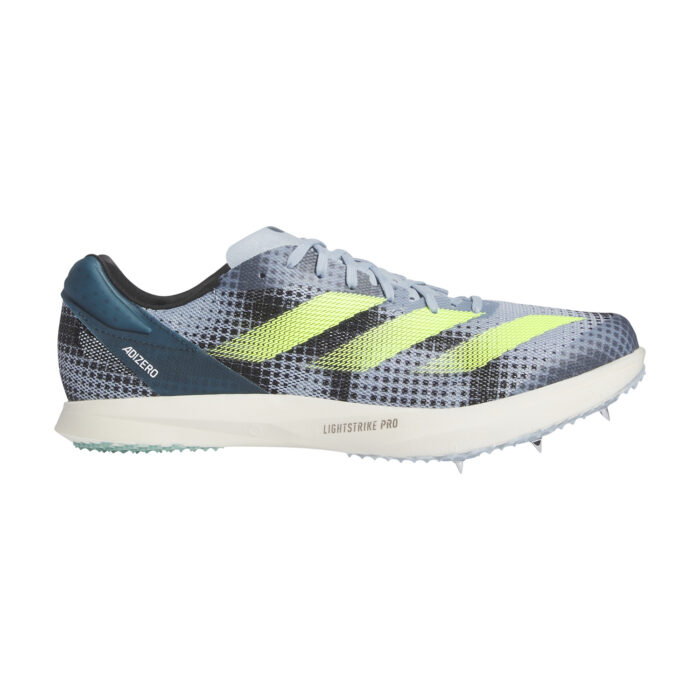
Sprint Spikes
Sprint spikes all depend on getting that extra .001 seconds out of every step towards the finish line. Having a proper sprint spike can help a sprinter achieve that win, personal best, or relay spot.
They’re also not too different from distance spikes. For starters, both have spike plates where spikes are inserted on one side and your foot on the other. Many of the modern versions of these spikes have carbon plates that pop your foot off the ground than has ever been imagined in the past. And the foams are similar. That’s pretty much where the similarities end.
Sprint spikes are rigid. I mean, like, unbendable. There’s a reason for that though. When you’re looking to make a sprint spike, you have to understand the distance and the discipline.
In sprinting, the race is decided in a matter of milliseconds. Oftentimes, the winner is decided because they leaned over better than the others. Thus, there is no room for unnecessary technology or movement. This means that the shoe will not allow the athlete to move their foot more than they have to.
The spike forces the athlete to be on their toes at all times to maximize natural mechanics – You’re running your absolute fastest when you’re on your toes. That is also why there is little to no cushion or tread added to the heel. No sense in having the weight there if you’re not going to need it. This rigid, no nonsense design is precisely why sprinters need sprint spikes and distance runners need distance spikes.
Let me show you some that I’m keen on.
Nike Air Zoom Maxfly
I mean, the name sort of sounds like the best sprinting spike in the sport, right? Nike Maxfly. It gives a feeling that you’re going to get the max out of it and yourself.
Just as I said earlier, it is a sprinter’s spike so it’s a rigid shoe that has much of the technology and design focused around the ball of the foot. Nike added an airbag in the forefoot to provide some cushion without adding any weight to the spike.
Much of the spike stays true to the important elements of sprinter’s spikes, lightweight, responsive, and speed over everything. Because at the end of the day, that is the goal. Fastest to the line wins.
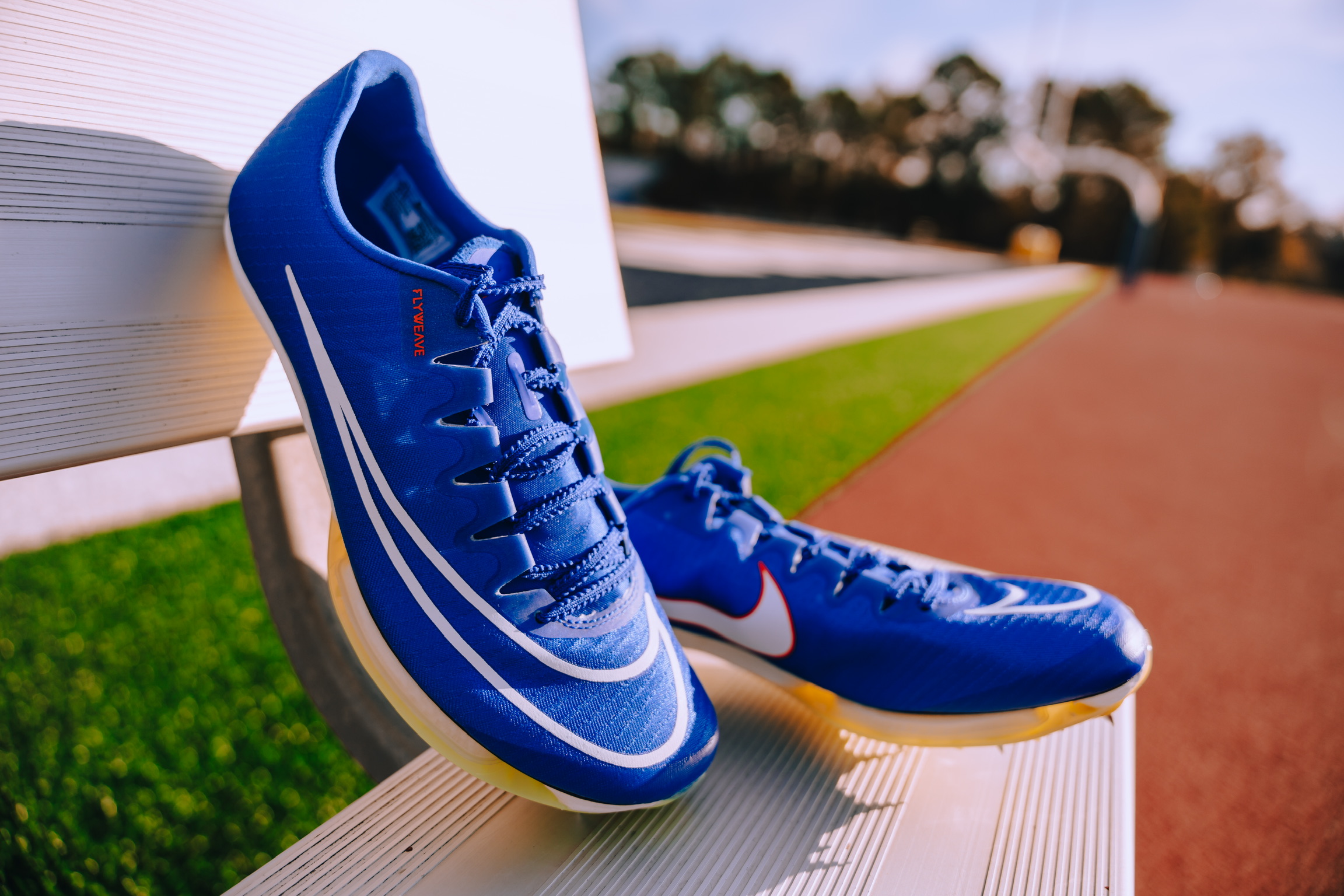
Nike Rival Sprint
If you’re looking for a less expensive, beginner’s sprint spike, check out the Rival Sprint. It’s effectively a basic sprint spike — it only has the essentials. Nothing flashy or groundbreaking, but gets the job done. It’s a stiff spike with a spike plate at the toe.
I would argue it’s an incredible spike for runners who are new to the sprinting game. If you’re getting into your first track meets and you’re not sure about your future in the sport, try the Rival Sprint. It’s a serviceable replacement for the Nike MaxFly if you’re unsure about sticking with track and field, so you can give it a go without doling out the big bucks.
I chose these spikes because they’re ones I’ve gotten the opportunity to work with and race in, but that doesn’t make them the only good spikes in track and fieldPart of the beauty of track and field is that you have a ton of options when it comes to spikes and shoes in general. The best spike or your favorite spike might not be on this list, but that doesn’t mean it’s not a great spike. Best thing to do is to try on a spike, run in it, race in it, and come to your own conclusion.
Head to your local running store to get fitted for the right size and type of spikes for your event. It’ll make a huge difference.
If you need a place to test the track spikes out, come out to Runologie’s Track Night or join Runologie Track Club for some track meets/workouts!
